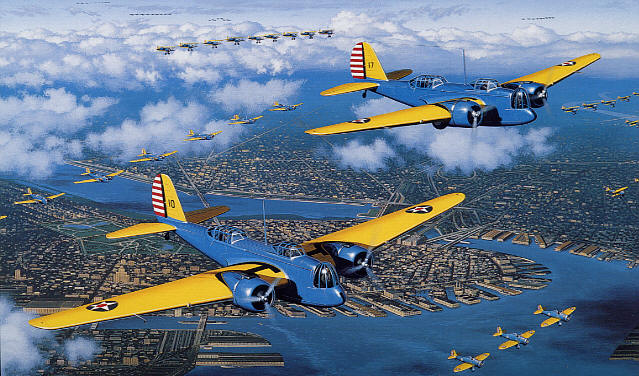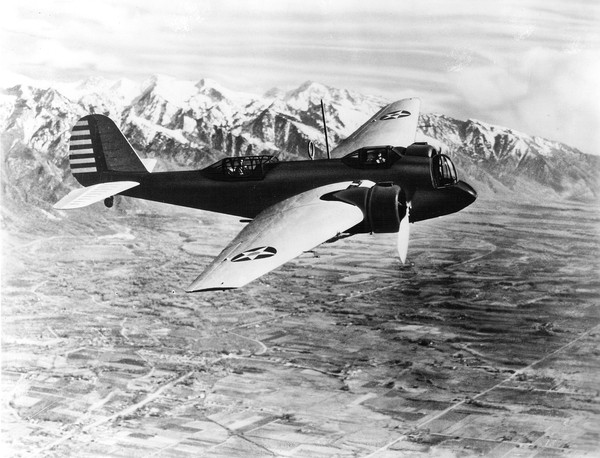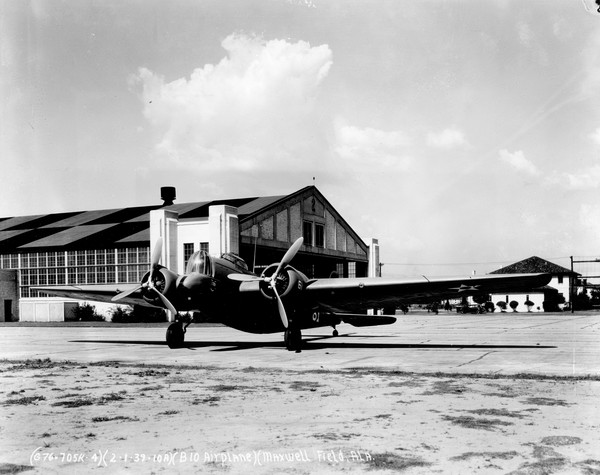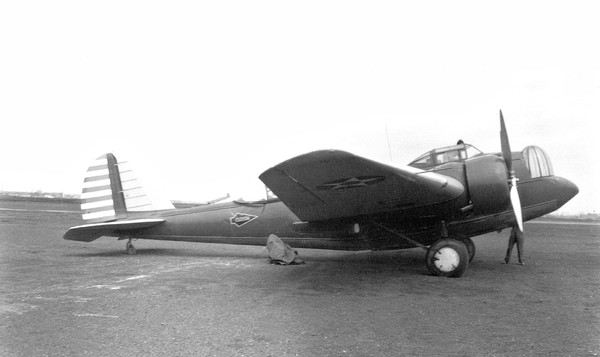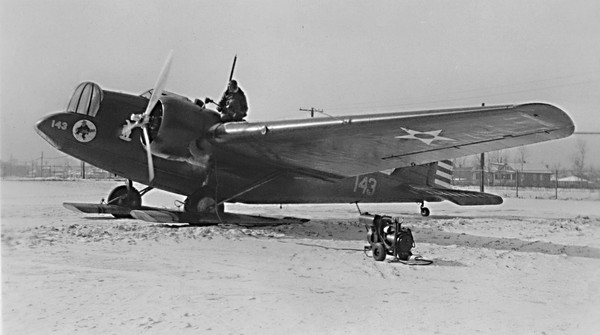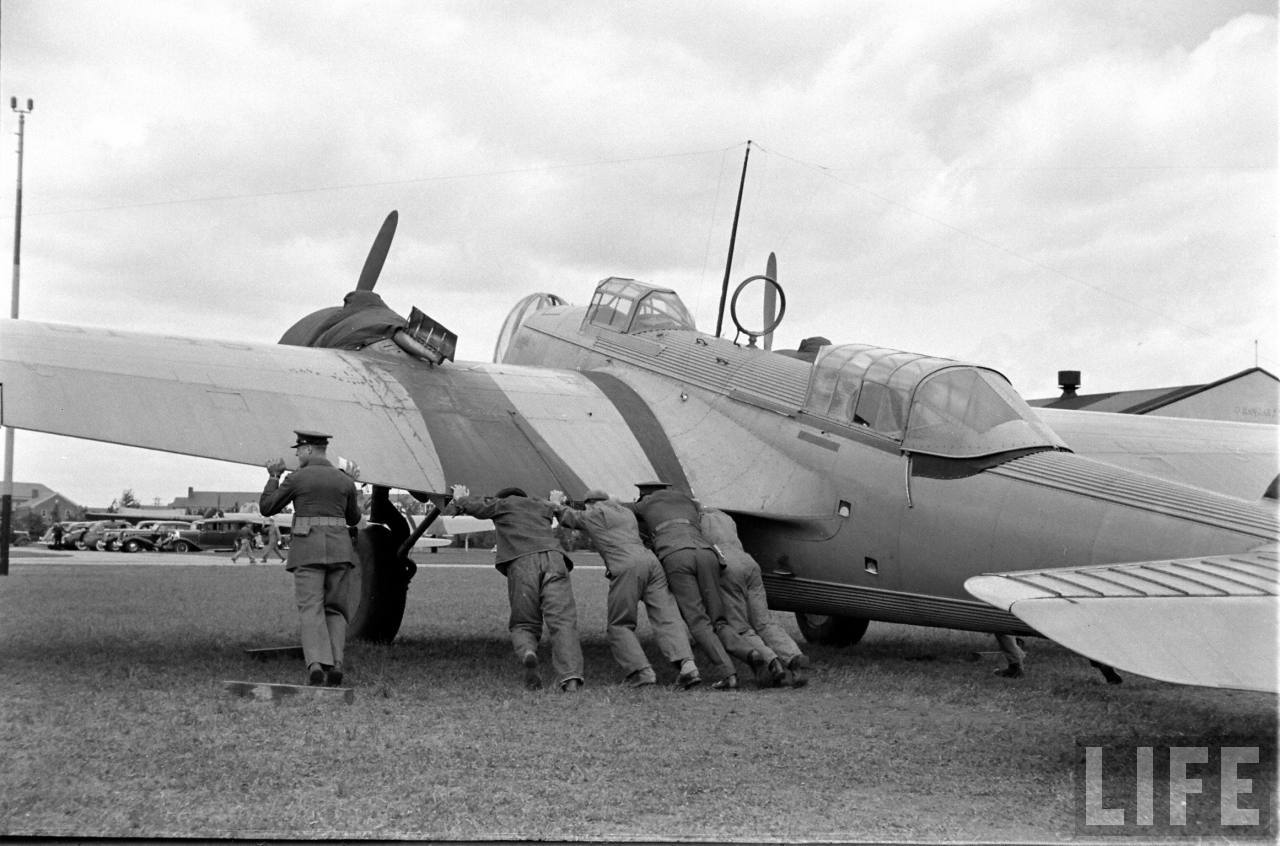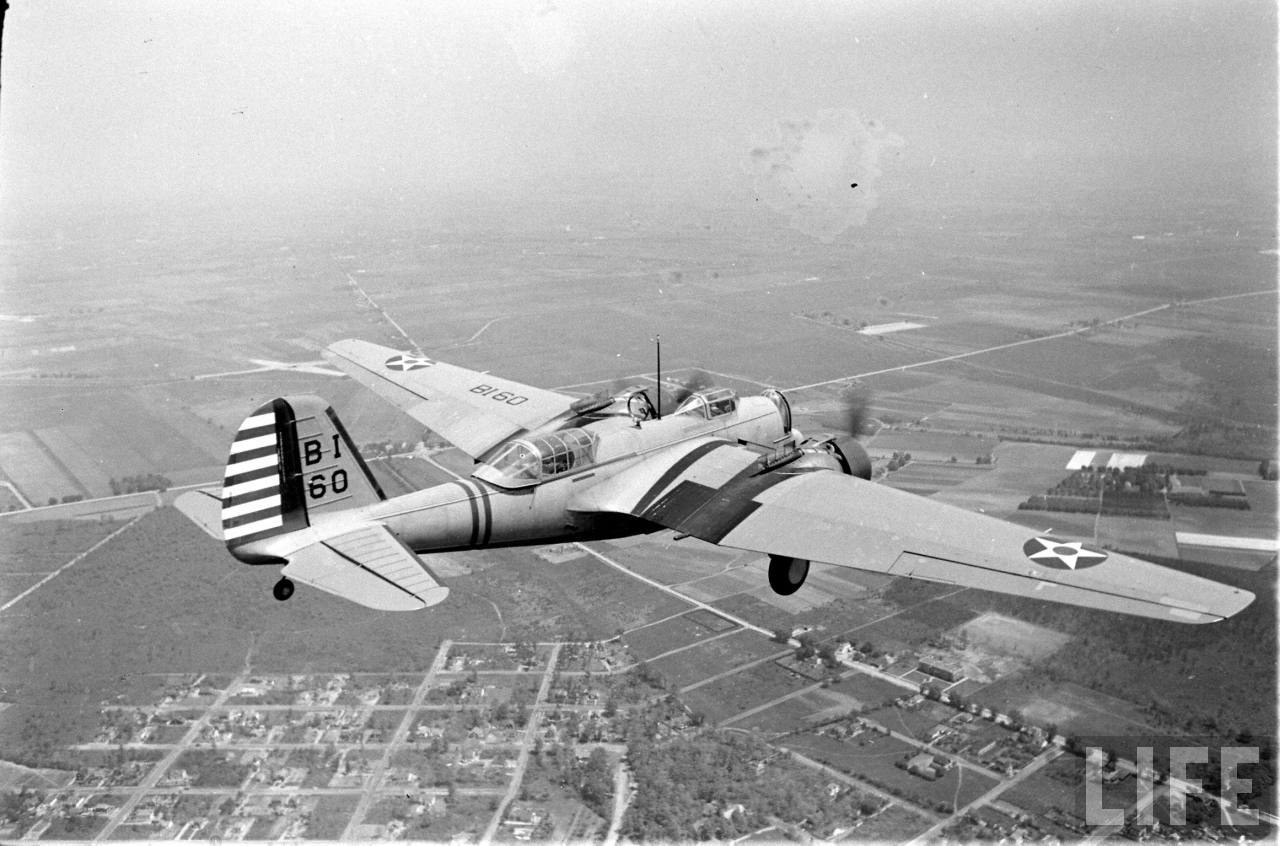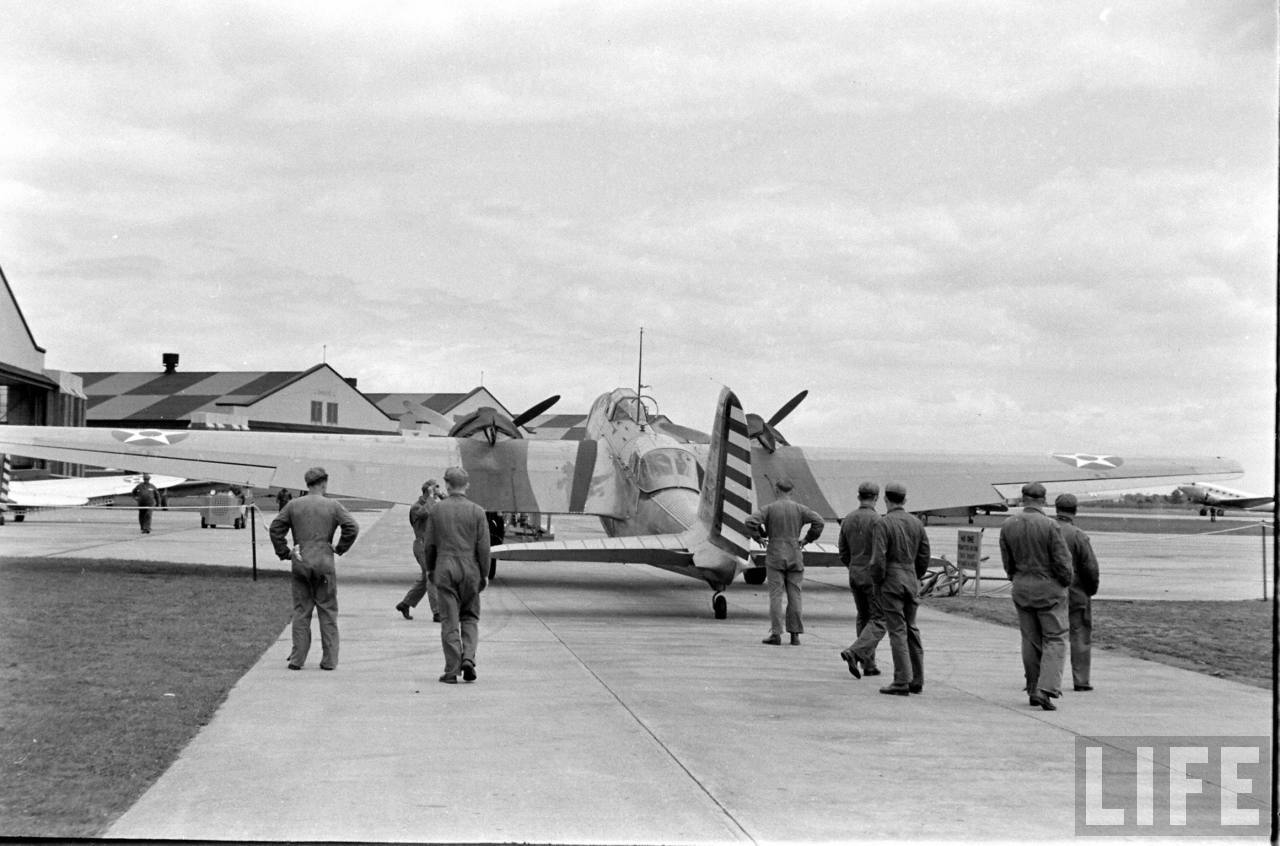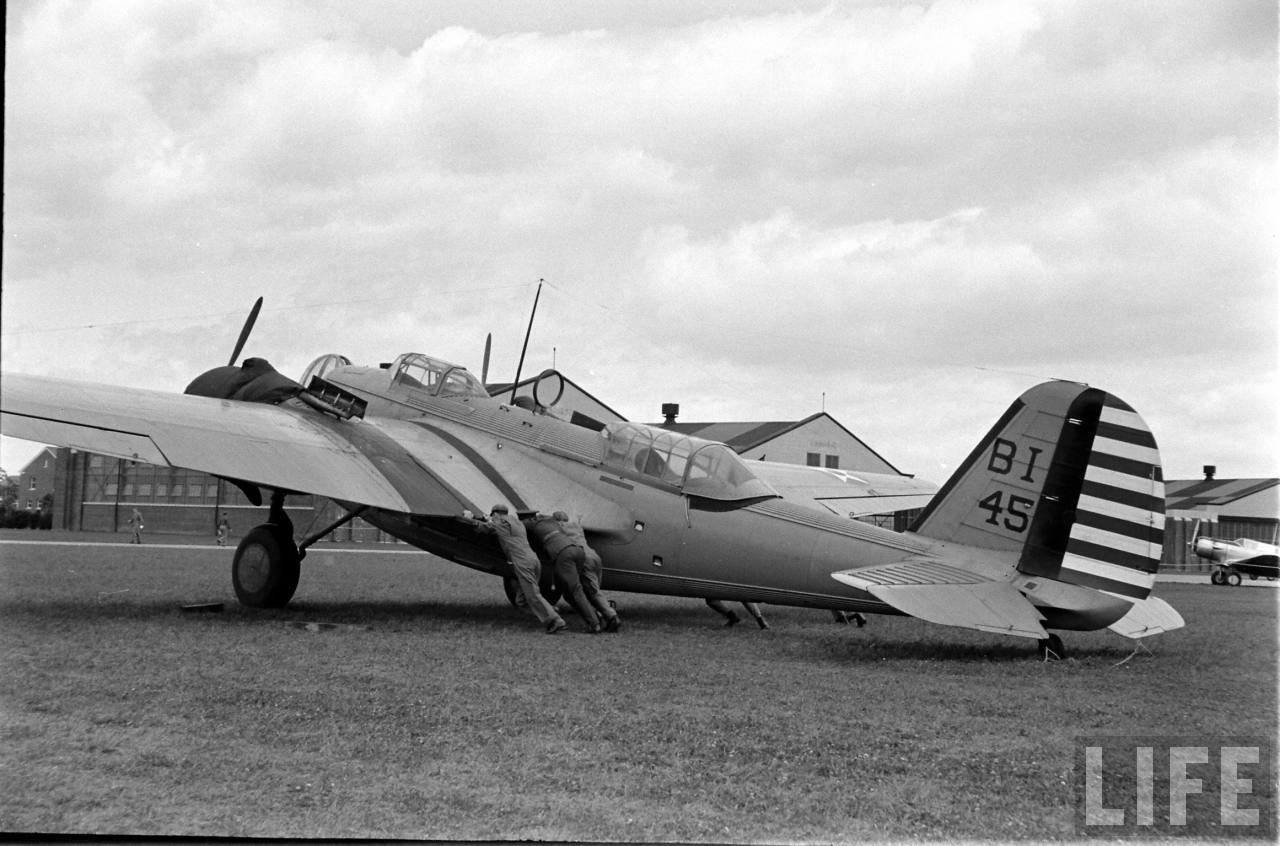
|
Martin B-10 |  |
||||||||
|---|---|---|---|---|---|---|---|---|---|---|
 |
 |
 |
 |
 |
 |
 |
 |
 |
 |
|
| |||
|
The Martin B-10 was the first all-metal monoplane bomber to go into regular service with the US Army Air Corps (USAAC). It also featured such innovations as, a fully enclosed cockpit, an internal bomb bay, retractable landing gear, a rotating gun turret, variable-pitch propellers and autopilot. So advanced was the new design, its performance was 50 percent faster than contemporary biplane bombers and was as fast or faster than most fighters of the day. Built on speculation in 1932 by the Glenn L. Martin Company, located in Baltimore Maryland, it was designated as the Model 123. Originally it featured open cockpit/gunner compartments, which was typical at the time. After it was handed over to the USAAC, it was designated as the XB-907 and was powered by two 600 hp Wright R-1820-E Cyclone engines with NACA ring-type cowlings. After testing, it was sent back to Martin and designated as the XB-10.1 It was reconfigured to enclose the crew stations and nose turret, and fully enclosed engine cowlings replaced the ring cowlings used on the Model 123. The engines were replaced with more powerful 675 hp Wright R-1820-19 Cyclones, and the wing span was increased which lowered the landing speed from 91 mph to 65 mph. At this stage it had a top speed of 197 mph (317 km/h) which was considered very fast at the time. In 1933, the XB-10 was awarded the Collier Trophy and Martin received a contract for 48 aircraft.2 The first fourteen were designated pre-production YB-10s. This was followed by one YB-10A with turbo-supercharged engines. Additional orders included, seven YB-12s with 775 hp Pratt & Whitney Hornet engines, one XB-14 with 950 hp R-1830 Twin Wasp engines and twenty-five B-12As similar to the YB-12, but with increased fuel capacity. The first deliveries were made in mid-1934 to the USAAC for service trials and in 1935 they were delivered to operational units that include the 7th, 9th, and 19th bomber groups. Deliveries continued through 1935-36 with an additional order of 103 B-10Bs. Following the introduction of the Boeing B-17 and Douglas B-18, the B-10 was approved for export. The export version was the Model 139W. Argentina received 25, China (9) nine, Siam (6) six, Turkey (20) twenty, Russia (1) one, and the Netherlands 117. Only the first 39 Netherland aircraft were 139Ws which was similar to the B-10B. The remainder were designated as the Model 166 which had a long greenhouse canopy connecting both the forward and rear cockpits.3 Some B-10 series bombers were equipped with twin-floats and could operate as a seaplane. 32 were built as B-12s and were powered by 700 hp Pratt & Whitney R-1690-11 engines and had provisions for bomb bay extra fuel tanks and floatation chambers for over water flying as part of the Army Air Corps coastal defense mission.The total production of all B-10 versions was 348 aircraft with 166 for the USAAC and 182 for export. The wing span was 70 ft. 6 in. (21.5 m) and the length was 44 ft. 9 in. (13.6 m). The top speed was 213 mph (343 km/h) and had a service ceiling of 24,200 ft. (7,380 m). Armament consisted of three 0.30 caliber machine guns with a bomb-load capacity of 2,260 lbs. (1,030 kg). |
|||
| Specifications: | |
|---|---|
| Martin B-10B | |
| Dimensions: | |
| Wing span: | 70 ft 6 in (21.5 m) |
| Length: | 44 ft 9 in (13.6 m) |
| Height: | 15 ft 5 in (4.70 m) |
| Weights: | |
| Empty: | 9,681 lb (4,391 kg) |
| Max T/O: | 16,400 lb (7,439 kg) |
| Performance: | |
| Maximum Speed: | 213 mph (343 km/h) |
| Cruise Speed: | 193 mph (311 km/h) |
| Service Ceiling: | 24,200 ft (7,375 m) |
| Range: | 1,240 miles (1,996 km) |
| Powerplant: | |
| Two 775 hp (578 kW) Wright R-1820-33 radial engines. | |
| Armament: | |
|
Three Browning 0.30 caliber (7.62 mm) machine guns and 2,260 lbs. (1,030 kg) bombs. |
Endnotes:
|
Return to Aircraft Index
© The Aviation History On-Line Museum.
All rights reserved.
Created August 28, 2013. Updated October 22, 2015.

